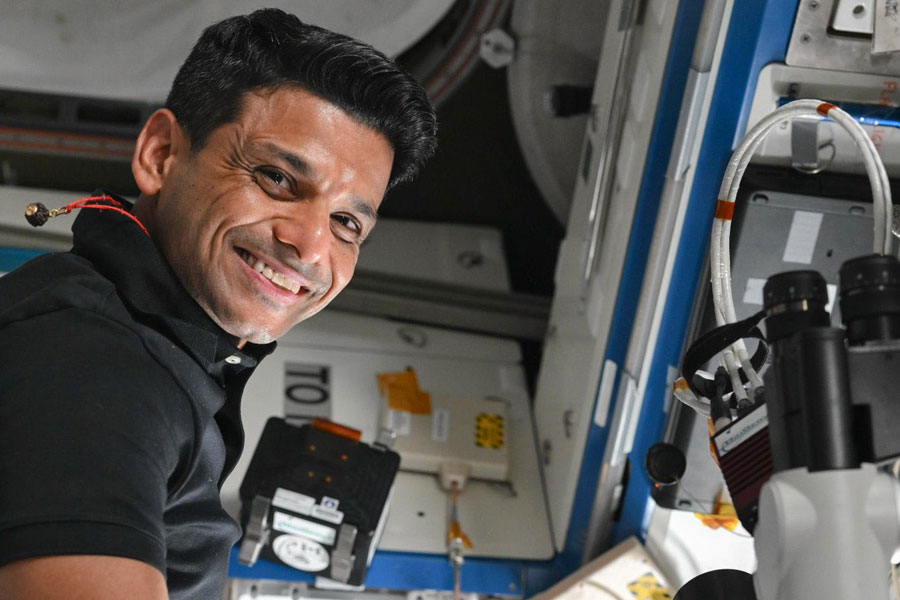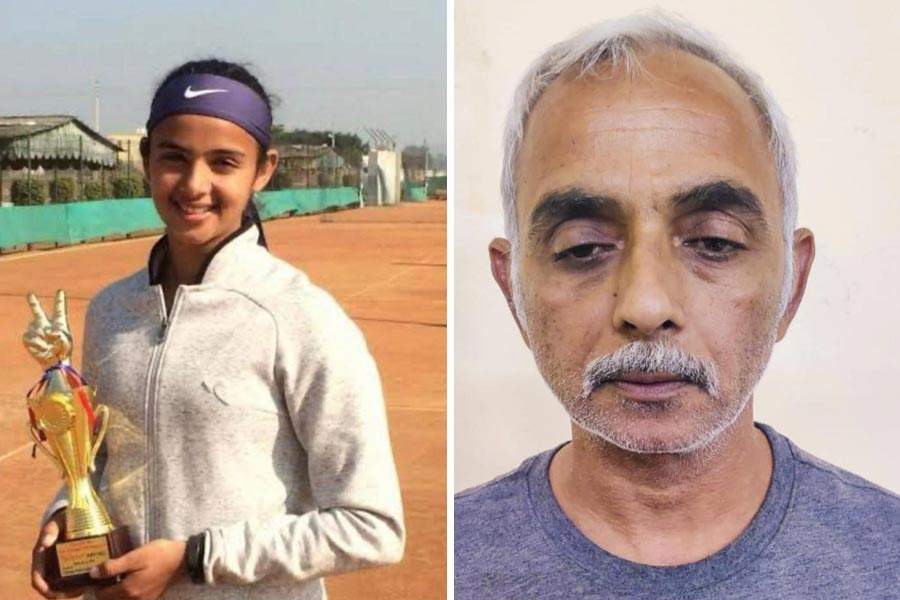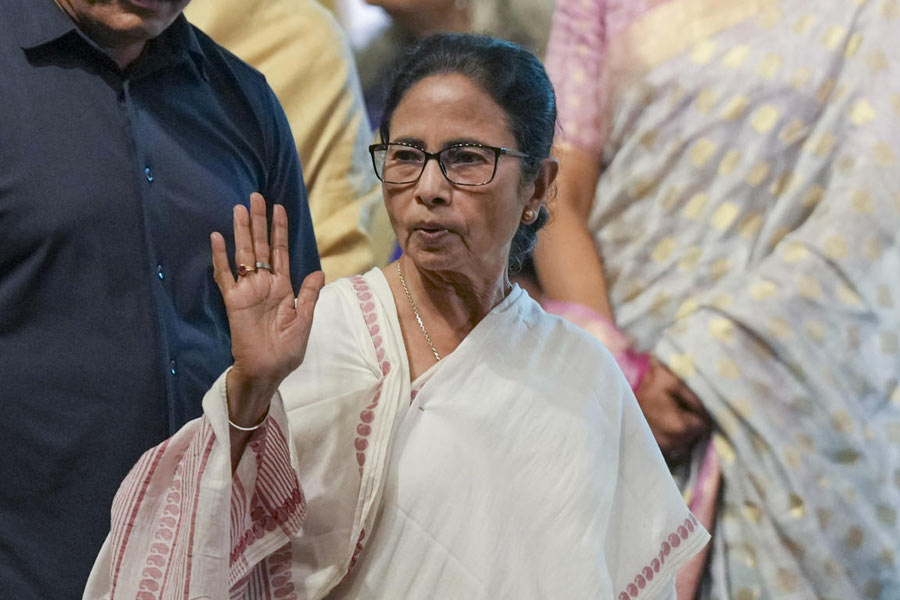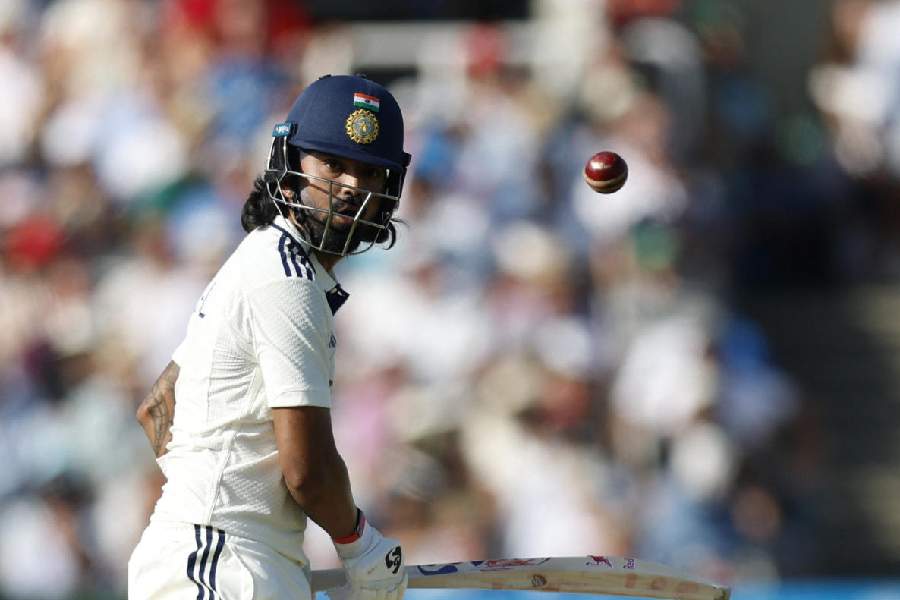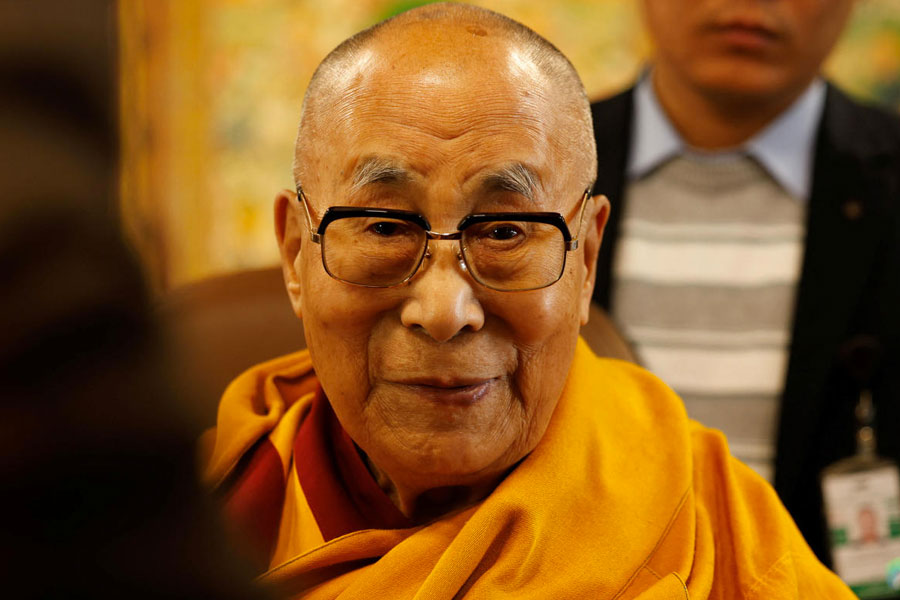 |
| Tourists viewing the Taj Mahal by moonlight on Saturday. (AFP) |
Agra, Nov. 28: Five minutes into the first viewing of the Taj Mahal by moonlight in 20 long years, the only sounds that could be heard in the enveloping silence were sighs. One assumed they were sighs of appreciation till the silence was broken by a voice in the background asking: ?Bas, yehi hai (Is that it)??
Admittedly, the blasphemer was very young and presumably not a true aesthete, but on a misty night and at a distance of 319 metres ? that?s how far it was from the viewing platform ? many felt the Taj was not really at its best that night.
The Taj Mahal was opened to the public after dark yesterday for the first time since 1984. This is one monumental experiment undertaken by the Uttar Pradesh government, for if all doesn?t go well, the Supreme Court will order night viewings to be stopped. The Agra chapter of the Archaeological Survey of India (ASI), which is organising the viewings, is on tenterhooks, for there are many waiting to see it being proved colossally wrong.
To those looking for tickets on Saturday morning to the first night?s ?show?, it must have seemed as if the ASI had already lost the battle. Tickets for the eight half-hour viewing slots from 8.30 pm onwards were ostensibly being sold since the day before, but a software crash had ensured that yesterday no tickets could be issued. As this technical glitch was not resolved till late afternoon, there were many who returned disappointed at not being able to procure the steeply priced (Rs 510 for Indians and Rs 750 for foreigners) tickets.
?It is unfortunate that many slots are still free but we are not able to issue tickets for them. It?s a technical problem,? said D. Dayalan, superintending archaeologist of the ASI, Agra.
If it started on the wrong foot, the ASI made up by the efficiency of its operations at the Taj?s East Gate.
Assisted by the Central Industrial Security Force (CISF) that is normally deployed for Taj security, the ASI whisked visitors away from Shilpgram, where they had been asked to report, to the entry point at the East Gate in battery-operated buses.
Several visitors seemed a bit frazzled after the thorough frisking, body search and scanning and some journalists were heard commenting how the security check was even stricter than the one at ?7 RCR? (the Prime Minister?s residence), but the CISF assured it was all necessary.
Perceived terrorist threat to the Taj had closed down the night viewing programme in 1984, when Punjab militancy was at its height, and it seemed that even after 20 years, the Taj was not as secure as one would wish.
Nostalgic visitors recalled a time when the Taj used to remain open every night till a certain hour and the grounds were free for visiting as well. Said 55-year-old Agra resident Aijaz Ahmed: ?When I was young, moonlight viewing of the Taj was hardly a novelty. I remember being extremely disappointed when the practice was stopped, which is why I made sure I come here today. It?s a special time for me.?
Entering the Taj grounds after dark was as much a novelty for those who had only seen it during the day as it is to those who see this incomparable piece of architecture for the first time. There were a few visitors in the first couple of groups who had already done the rounds of the Taj in the morning, and it was to them, perhaps, that the glory of the moment appealed most strongly. Having recently been subjected to the ignominy of being one of the thousands milling about the Taj on a Saturday afternoon, they could truly savour the silence that pervaded the grounds when only about 50 others were around to share it with them.
The distance from the monument could have been shorter and the moon brighter, but those who felt the joy of being in the presence of the Taj in the eerie silence of a moonlit night were not heard complaining too much.


